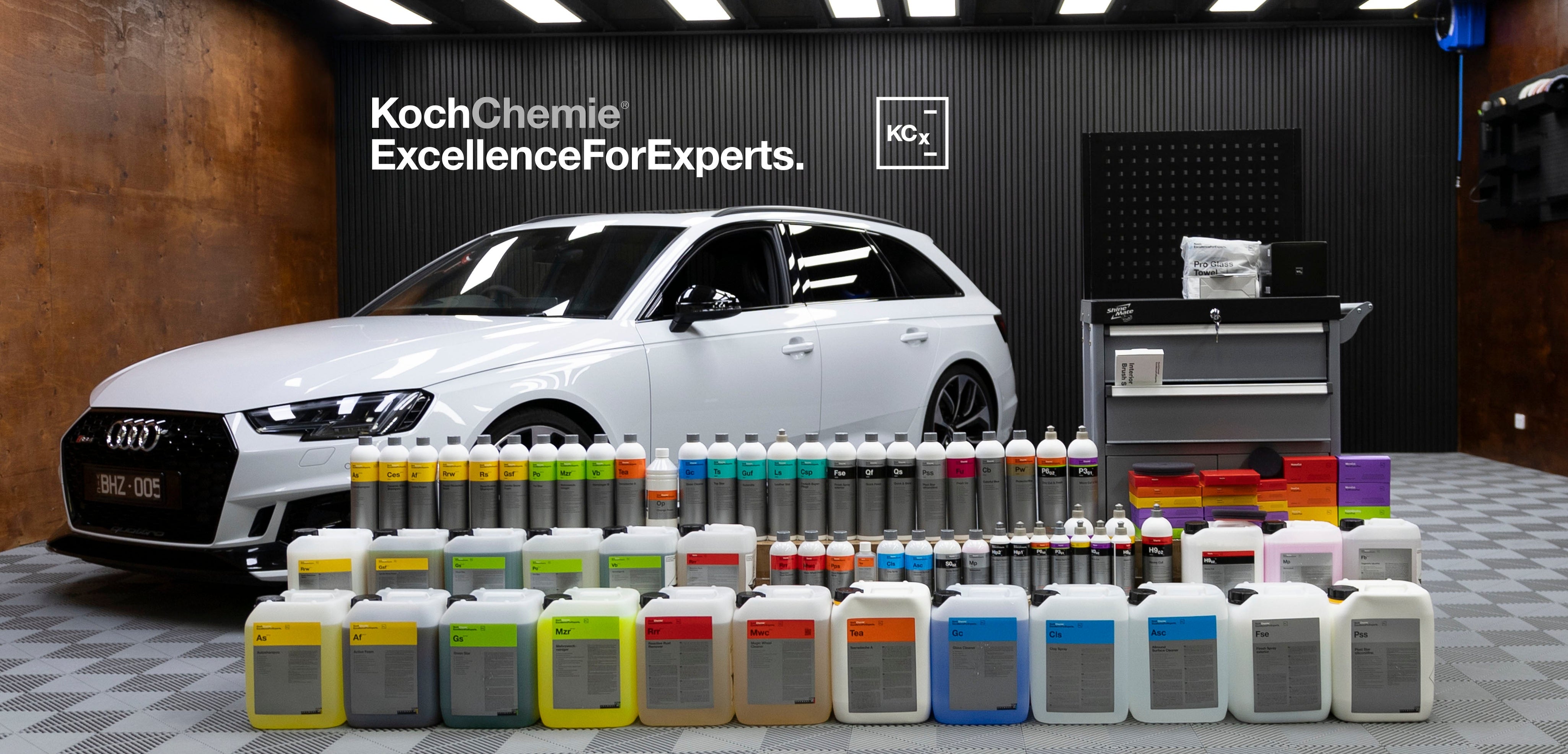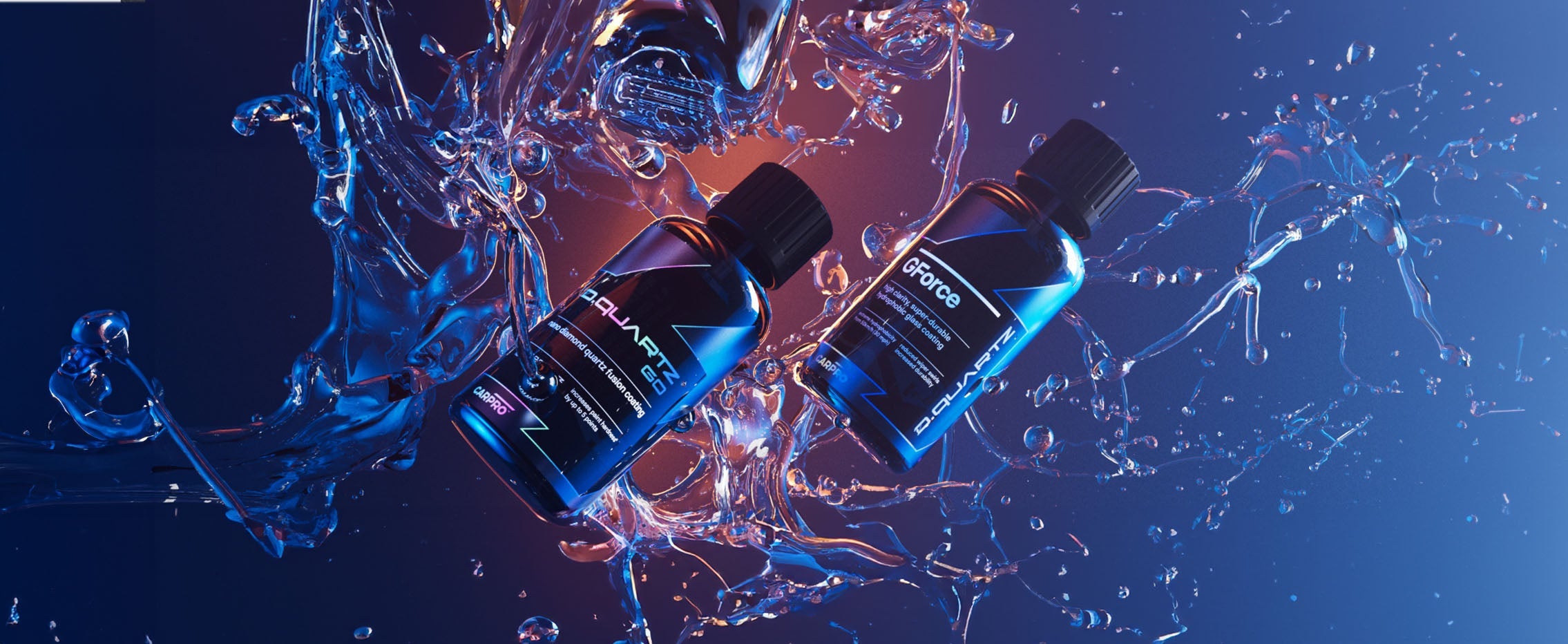What is Vehicle Decontamination?
In relation to automotive vehicles, decontamination is the means by which foreign matter (including environmental and traffic contamination) that has strongly bonded to a vehicle’s paint and trims are removed in what’s known as the decontamination process.
The decontamination process tends to follow a more intensive periodic car wash process. This helps to prepare the vehicle's paint for the decontamination process and steps that follow. The goal of a decontamination process is basically to strip everything off the vehicle’s paint and trims, including environmental contamination, as well as any existing waxes, sealants or coatings. This causes the the paint and trims on the vehicle to become completely clean and free from any foreign matter.
What are the Types of Decontamination?
Decontamination usually falls into two main categories: chemical decontamination and mechanical decontamination. Generally, chemical decontamination should be dealt with before moving on to mechanical decontamination.
What is a Chemical Decontamination?
Chemical decontamination involves applying various car detailing chemicals to your vehicle's paint. Iron removers are used to treat environmental fallout or bonded metal particles. Tar and adhesive removers are used to treat road or traffic grime and tar deposits. All purpose cleaners (such as CarPro Multi X) and degreasers can be used to treat traffic film as well as to strip existing paint protection that has been applied in the past. Acid based water spot removers or mineral deposit cleaners can be used to neutralise and remove water spots and bird poo spots on your vehicle's paint.
How to Perform a Chemical Decontamination:
As a general method, these chemicals are sprayed on to wet or slightly wet paint (after washing the vehicle) and left to dwell for a few minutes and then rinsed off, or they can be additionally worked over the paint with a microfibre cloth for increased performance.
Chemicals should never be used under direct sunlight or on hot panels and they should be rinsed off within five minutes or before they entirely dry up. Otherwise, they can stain paint or trims if used incorrectly. Certain chemicals such as tar removers can cause clear plastics such as head and tail lights to haze up in rare cases so they should be avoided. If that does occur, generally, a light polish of the plastic will restore it. Certain acid based chemicals such as mineral or water spot removers or even certain wheel cleaners can cause bare or uncoated metals to haze up or leave a milky look behind, so they should be avoided on bare metal trims or rims. If that does occur though, you can usually restore them by compounding and/or polishing the metal.
 (NV PURIFY | Waxit Aero Clay Cloth)
(NV PURIFY | Waxit Aero Clay Cloth)
How to Perform a Mechanical Decontamination:
Generally, if the chemical decontamination process isn’t successful in removing the surface contamination from a vehicle, it will be followed by a mechanical decontamination.
Mechanical decontamination is the process of using an automotive clay bar to physically collect and remove more stubbornly bonded particles from car paint, glass and even certain materials and trims. Additionally, there are also newer forms of automotive clay known as synthetic clay mitts, towels, blocks and pads that work in much the same way. Any form of clay, either traditional or synthetic, must be used with a clay lubricant to aid its movement and reduce potential marring on the paint or surface. A clay lubricant can be water, but ideally you should use a liquid with increased lubrication such a car soap or a dedicated clay lubricant.
Claying a vehicle should be done by sliding a small piece of clay or a synthetic clay pad with minimal pressure along the surface of your vehicle, ensuring you have adequate lubrication and are working small sections at a time. Make sure you are frequently folding your clay bar or rinsing your clay pad. Apart from paint or clear coat, you can also clay glass, metals and non-textured gloss plastics. However, you should never clay matte or satin finish paints, textured plastics, or plastics with matte or satin finishes.
Claying will in fact slightly mar the finish of the paint, usually causing a very minor dulling on hard paints, while on soft paints it can be more prominent. It’s important to understand that it’s normal for this to happen and a very light polish will tend to remove any clay marring quite easily, which is also why a full decontamination process is usually followed by paint correction.

The Effects of Contamination on your Vehicle:
If left untreated, contamination such as environmental fallout, road tar, traffic film water spots, bird poo, tree sap and so on will break down any wax, sealant and coating in place and then continue to eat or etch it’s way into your vehicle’s paint or clear coat over time.
Unless you intend on removing a ceramic coating, you should not clay it. Instead, just use a chemical decontamination process to clean and reset it.

When Should I Decontaminate My Car?
The most common time to give a vehicle a decontamination process is prior to engaging in a process of paint correction and/or paint protection for your vehicle, as it’s extremely vital that both paint correction and protection are implemented immediately after a thorough decontamination process.
Additionally, a decontamination process is an important procedure to remove environmental contamination in an effort to limit its destructive effect and wear on automotive paint. If your vehicle has a ceramic coating, conducting a periodic chemical decontamination process is generally vital to maintain the ceramic coating's ability to perform at its best and to last as long as possible. It does this by removing contamination that will limit the coating's performance and longevity.
Without a proper, thorough and effective decontamination process, it is virtually impossible to achieve a quality paint correction or paint protection result. Without adequately decontaminating your vehicle prior to paint correction or protection, it inevitably leads to additional issues, problems and headaches during those correction and protection steps. This makes the paint correction and protection process far more difficult and time consuming than they should be and can significantly limit the quality of your results. A decontamination process prior to applying your favourite wax, sealant or coating will ensure you get the best possible look, performance and durability from any paint protection product.
A decontamination process is only something that should be done on a vehicle periodically- which could be as frequent as every 3-6 months on vehicles that are heavily used and stored outside in extreme conditions, or as little as every few years for garaged vehicles with limited use.

(CarPro Iron X Lemon Surface Cleaner)
Can the Decontamination Process Harm Your Vehicle?
Without proper understanding of the right chemicals and products to use, and how to safely and effectively use them, it is possible to damage your car’s finish during a decontamination process. This will generally only happen if bad or improper methods, techniques or products are used. It’s vital understand that not all products by various brands are the same, so it’s important to always read the instructions and to do a little research to ensure that you are well informed with both the products and methods that you intend to use.






